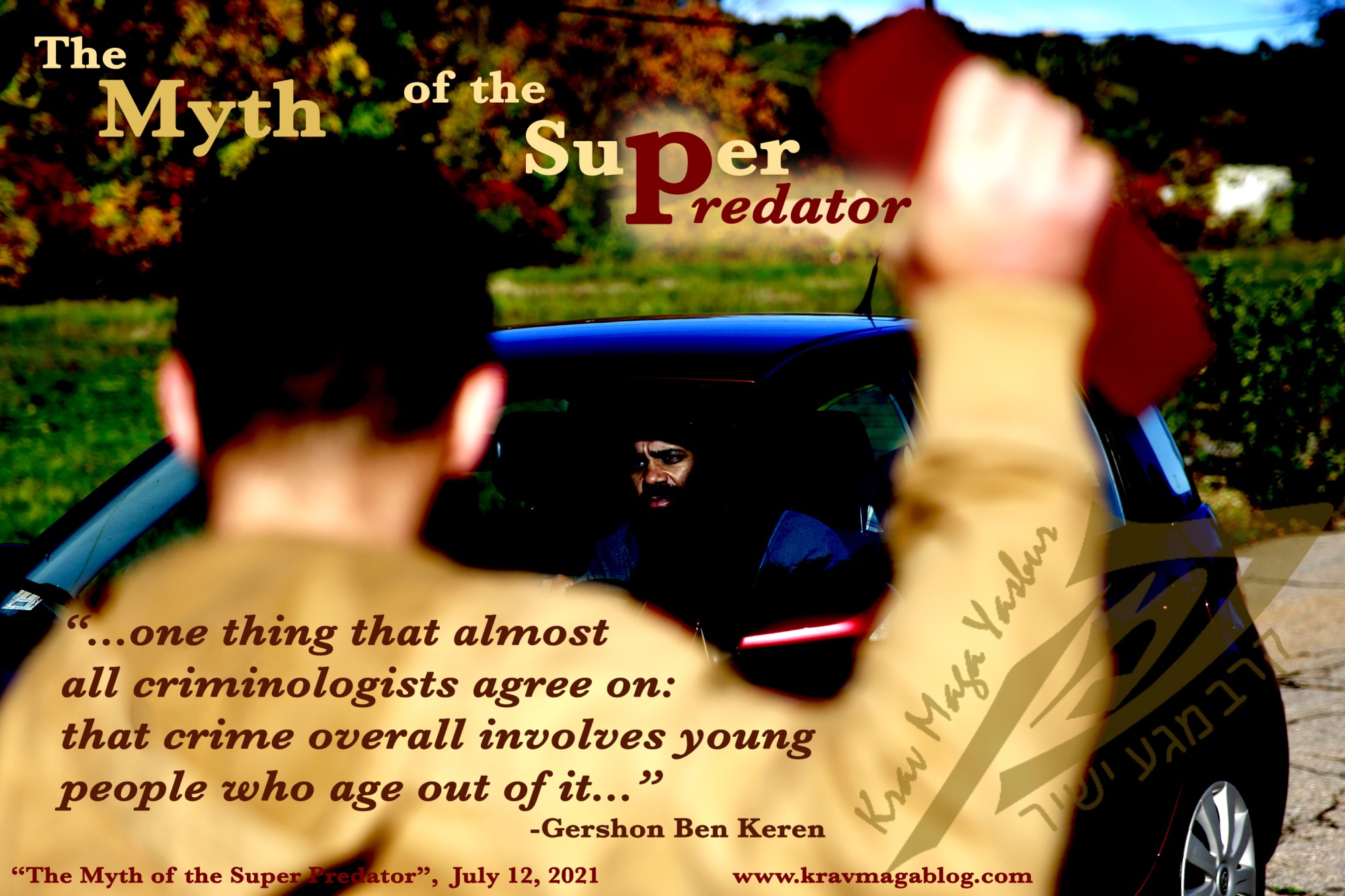Author: Gershon Ben Keren

Back in the 1980’s policy makers – not academics – started to talk about the rise of the “Super Predator” i.e., teenagers whose offending would worsen over time, and carry on growing proportionately into their adult years. This idea ignored one thing that almost all criminologists agree on, that crime overall involves young people who age out of it – excepting a few persistent offenders. The idea of the Super Predator also contained the idea that such individuals belonged to an identifiable sub-group, making them easy to pick out, allowing for them to be given harsh sentences to that would both keep them off the street and deter them from offending in the future. This idea of juvenile criminals – especially violent ones - belonging to definable and identifiable subgroups has historically been a popular notion in criminology, however those who have put forward this idea have by their own admission, consistently failed to demonstrate its validity. The search although attractive - as it would allow resources to be directed at dealing with these individuals - has proved elusive. In this article I want to look at some of the features of juvenile offending, along with the development of the adolescent brain, in order get a better idea of why teenagers/juveniles engage in violent offending, including how even the “best brought up kids” who seem perfect in the home etc., can engage in extreme acts of violence when in other situations etc.
Every now and again we will hear the story of a good, middle class kid, who was a model student and son/daughter, going off the rails and/or engaging in some act of extreme violence. If it’s a news story, teachers and family members will be interviewed and all will talk about how the individual acted out of character, and the person they knew could never have done the things they did etc. This is the legacy of Sutherland’s Differential Theory, developed in 1924. Sutherland believed that an individual’s commitment to criminality was the result of competing good and bad influences e.g., if a child grew up in a good moral home where the right/legal thing was always stressed, then when they were exposed to bad influences etc., they would refrain from doing the wrong thing. Almost, as in the cartoons, where the “Good Angel” sitting on one shoulder, would offer countering advice against the acts the demon on the other shoulder was suggesting. Sutherland, saw all influences as competing together to produce one outcome. If a person had more and stronger bad influences than good ones, then the balance would be tipped, and they’d engage in criminality. However, this theory didn’t/doesn’t really explain why “good kids” will sometimes do incredibly bad things. The work of Judith Harris in the 1990’s gives us a better and fuller explanation. She introduced the idea of context-specific learning. That is, children/teenagers learn how to act and behave in different contexts; so they may be the model son or daughter whilst at home because they’ve learnt the punishments and rewards for behavior in that context, but be the full-on rebel with their friends because they’ve learnt that the rewards for being bad are better when with them – such as the status and admiration they get – and that being good and doing the right thing are looked on with disapproval in this context. Harris found that children and teenagers were extremely adept at context switching their actions and behaviors to meet the approval of any group they were with. This also applies if a person’s peer is well-behaved and follows the rules etc.
Regions of the brain don’t develop at an equal rate – something that we’ve only been able to realize with the development of MRI technology. Those parts of the brain involved with emotional processing, such as the Limbic system, develop at a faster rate than those involved with information processing and learning i.e., the Prefrontal Cortex. This means that teenagers are much more prone to being guided by their emotions than older adults – where the “Reasoning Brain” is much more fully developed. A teenager, without experience and information, is not able to calculate risk in the same way that an adult can. An adult knows – or should know – that getting into a shopping cart, and then rolling yourself down the steepest hill you can find (and preferably one that is next to some form of water feature, such as a lake or canal), is not the best idea of that day. But having done it in my mid-teens, I didn’t fully appreciate the instability of a shopping cart at high speed, or the sheer speed such a vehicle could get to, in the same way I do now. At the time it was just something I needed to do, and with a crowd of friends agreeing with me, it would have been rude not to. This illustrates another facet of teenage/juvenile life: you spend a lot of time with your friends. Peer pressure is a major factor in teenage offending. Crime and violence is often carried out by groups rather than individuals, and unfortunately the US Criminal Justice System has a history of treating disorganized groups of teenagers as being members of organized gangs. An immature brain, that is ruled by emotions, coupled with the fact that most young people spend time in groups, is one of the major factors leading to Juvenile Offending.
I remember being on a course where a female participant on one day wore a t-shirt that said, “Never underestimate the stupidity of boys in large groups”. It perhaps more than any other single statement succinctly captures the most recent research in criminology and juvenile forensic psychology. A “good kid” regardless of socio-economic advantage/disadvantage, in a different context, especially when others are present, is capable of acting in a way that teachers/parents couldn’t imagine.